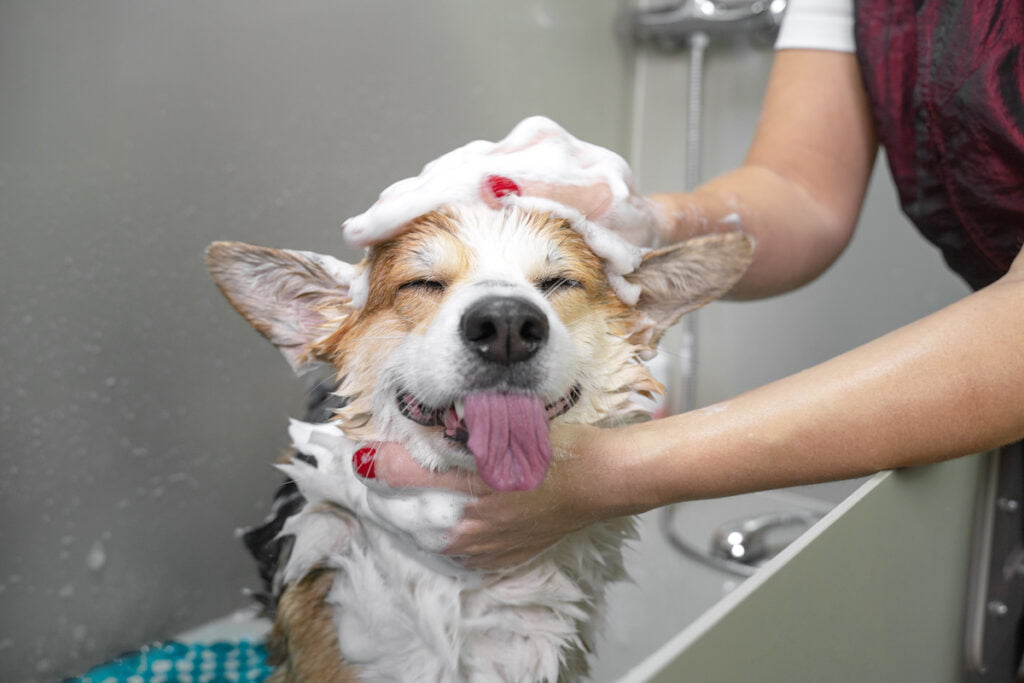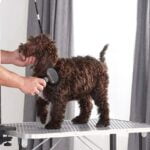Table of Contents
Maintaining proper hygiene is essential for your pet’s health and happiness. Good hygiene practices can prevent illness, reduce odors, and enhance the quality of life for your furry friend. This guide provides essential best practices for pet hygiene, ensuring your pet stays clean, healthy, and happy.

1. Regular Brushing
Regular brushing is crucial for maintaining your pet’s coat and skin health:
- Reduce Shedding: Frequent brushing helps remove loose fur and reduces shedding.
- Prevent Matting: Brushing prevents matting and tangling, especially in long-haired pets.
- Distribute Oils: Brushing distributes natural oils, keeping the coat shiny and healthy.
2. Bathing Your Pet
Regular baths are essential for keeping your pet clean and odor-free:
- Use Pet-Safe Shampoo: Always use shampoos specifically formulated for pets to avoid skin irritation.
- Frequency: Bathe your pet as needed, typically once a month, but more often for dogs that get dirty frequently.
- Proper Rinsing: Ensure thorough rinsing to remove all shampoo residue.
3. Dental Care
Good dental hygiene is vital for preventing dental disease and bad breath:
- Brush Teeth: Brush your pet’s teeth regularly using pet-specific toothpaste and toothbrushes.
- Dental Chews: Provide dental chews or toys to help clean teeth and massage gums.
- Regular Check-Ups: Schedule regular dental check-ups with your vet.
4. Ear Cleaning
Regular ear cleaning helps prevent infections and keeps ears healthy:
- Inspect Ears: Regularly inspect your pet’s ears for dirt, wax buildup, and signs of infection.
- Use Ear Cleaner: Use a vet-recommended ear cleaner and cotton balls to gently clean the ears.
- Dry Ears Thoroughly: After baths or swimming, ensure ears are thoroughly dried to prevent infections.
5. Nail Trimming
Regular nail trimming prevents overgrown nails and related issues:
- Trim Regularly: Trim your pet’s nails every few weeks to keep them at a healthy length.
- Use Proper Tools: Use pet-specific nail clippers or grinders for safe trimming.
- Avoid Quick: Be careful to avoid cutting into the quick, which can cause pain and bleeding.
6. Paw Care
Maintaining paw hygiene is important for your pet’s comfort and health:
- Inspect Paws: Regularly check paws for cuts, foreign objects, or signs of infection.
- Paw Pads: Keep paw pads moisturized with pet-safe balms to prevent cracking.
- Trim Fur: Trim fur between paw pads to reduce dirt buildup and matting.
7. Cleaning Living Areas
Keeping your pet’s living areas clean helps prevent illness and odors:
- Wash Bedding: Regularly wash your pet’s bedding to remove dirt, hair, and parasites.
- Clean Toys: Clean toys regularly to prevent bacteria buildup.
- Sanitize Food and Water Bowls: Wash food and water bowls daily to prevent bacteria and mold growth.
8. Flea and Tick Prevention
Preventing fleas and ticks is crucial for your pet’s health and comfort:
- Use Preventatives: Use vet-recommended flea and tick preventatives regularly.
- Check for Parasites: Regularly check your pet for signs of fleas, ticks, and other parasites.
- Clean Environment: Keep your pet’s environment clean and treat any infestations promptly.
9. Regular Vet Visits
Routine veterinary care is essential for maintaining your pet’s overall health:
- Annual Check-Ups: Schedule annual check-ups to monitor your pet’s health and catch any issues early.
- Vaccinations: Keep your pet’s vaccinations up to date to protect against common diseases.
- Health Monitoring: Discuss any concerns with your vet and follow their recommendations for care and treatment.
10. Healthy Diet and Hydration
A balanced diet and proper hydration are key to your pet’s overall health and hygiene:
- High-Quality Food: Provide a balanced diet with high-quality pet food that meets your pet’s nutritional needs.
- Fresh Water: Ensure your pet has access to fresh, clean water at all times.
- Monitor Weight: Keep an eye on your pet’s weight and adjust their diet as needed to maintain a healthy weight.
Conclusion on Best Practices for Pet Hygiene
Maintaining best practices for pet hygiene involves regular brushing, bathing, dental care, ear cleaning, nail trimming, paw care, cleaning living areas, flea and tick prevention, regular vet visits, and ensuring a healthy diet and hydration. By following these tips, you can ensure your pet remains clean, healthy, and happy. For more information on pet care, visit the ASPCA and AVMA.
FAQs on Best Practices for Pet Hygiene
How often should I brush my pet?
The frequency of brushing depends on your pet’s coat type. Long-haired pets may need daily brushing, while short-haired pets may require brushing a few times a week.
What type of shampoo should I use for my pet?
Always use shampoos specifically formulated for pets. Avoid human shampoos, which can cause skin irritation and dryness.
How can I keep my pet’s teeth clean?
Brush your pet’s teeth regularly with pet-specific toothpaste, provide dental chews or toys, and schedule regular dental check-ups with your vet.
How often should I clean my pet’s ears?
Clean your pet’s ears once a week or as recommended by your vet. Use a vet-approved ear cleaner and avoid inserting anything deep into the ear canal.
What is the best way to prevent fleas and ticks?
Use vet-recommended flea and tick preventatives regularly, check your pet for parasites frequently, and keep their environment clean.
How can I maintain my pet’s paw health?
Regularly inspect paws for cuts or infections, keep paw pads moisturized, and trim fur between paw pads to prevent dirt buildup and matting.











